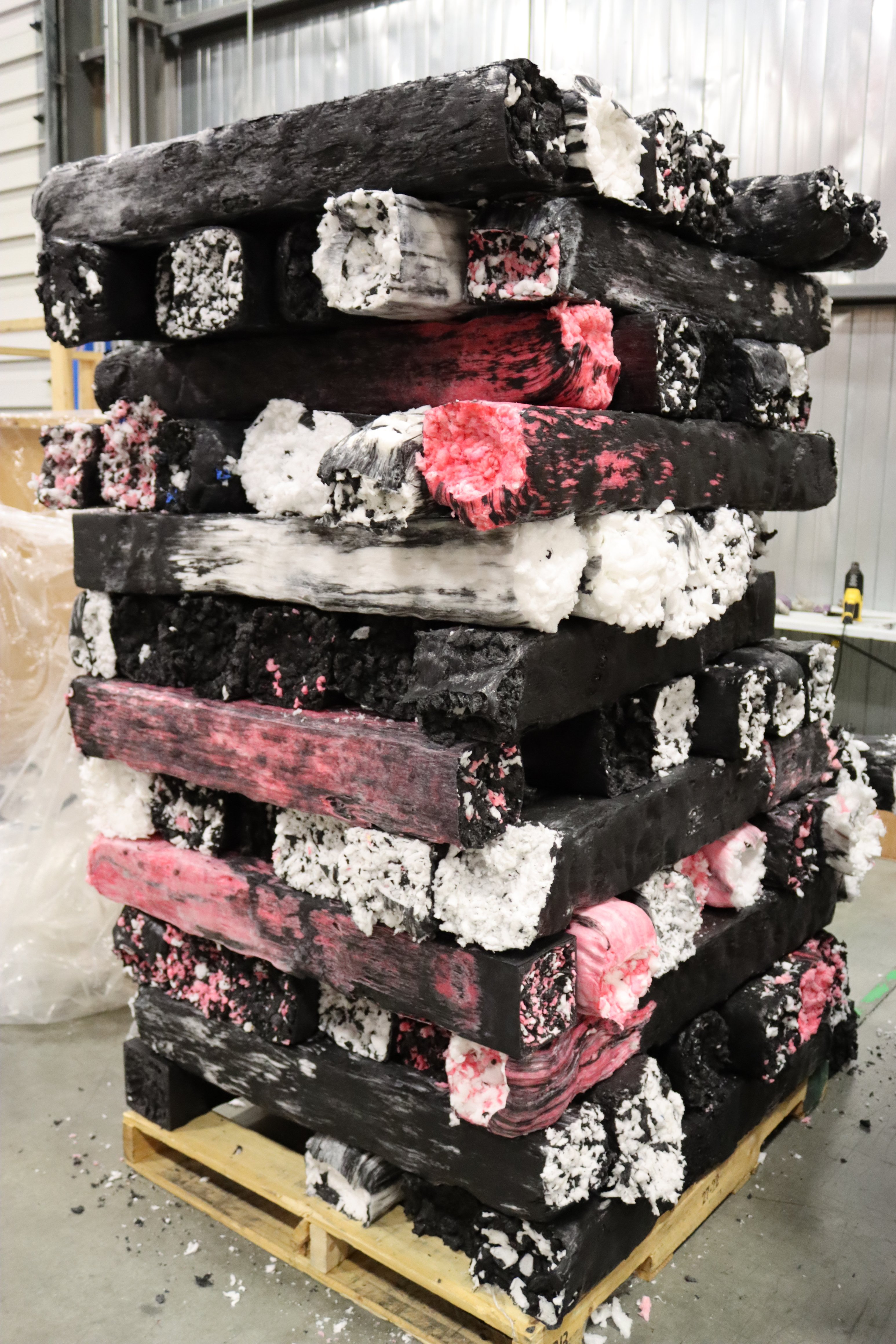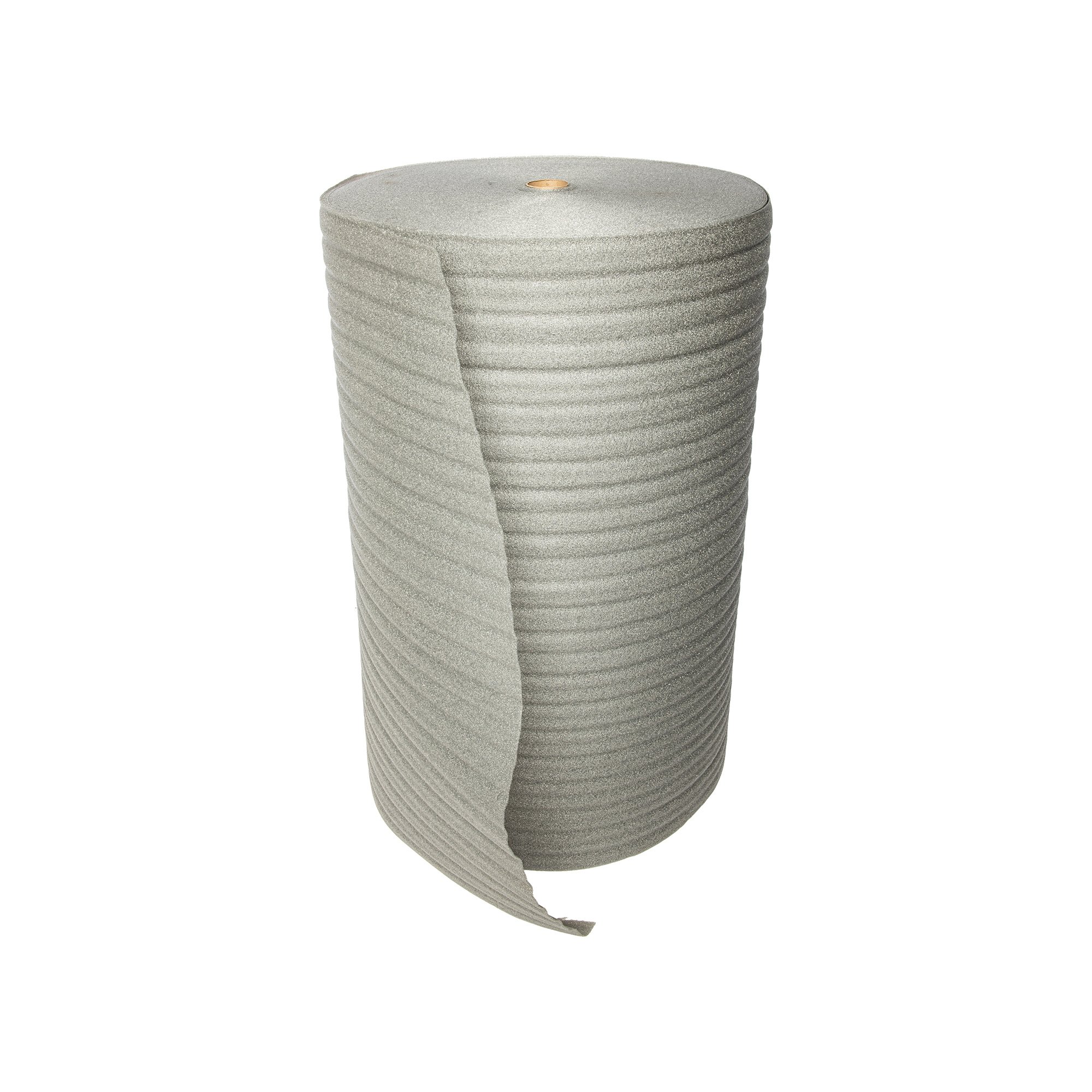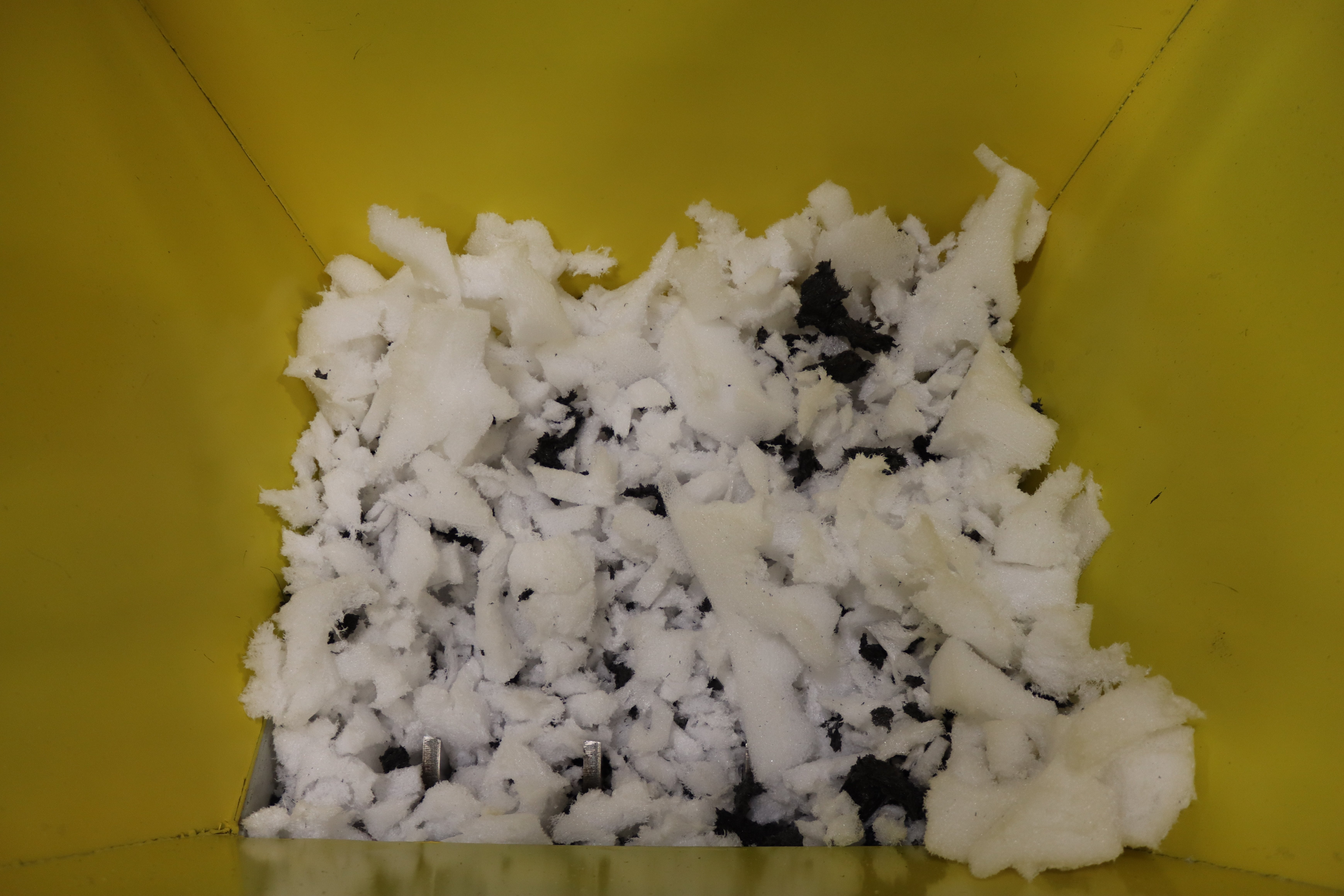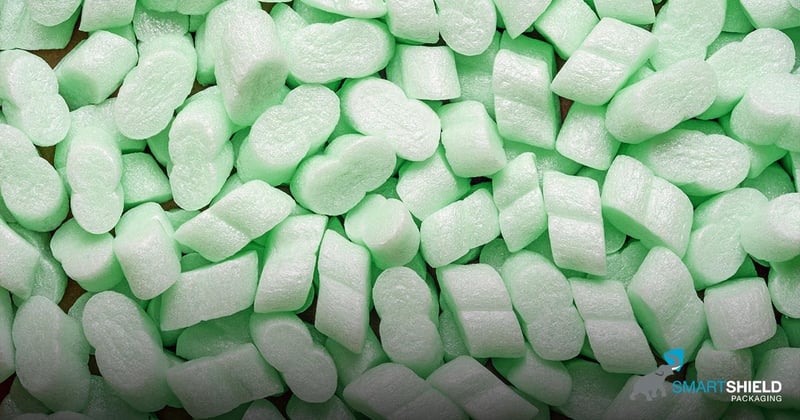This is a common question that we hear, and it's not as straightforward of an answer as you may think! All of the following foam types are recyclable, but if you were to put them in your blue bin they will most likely end up in the landfill.
Types of Recyclable Foam
- Polyethylene (PE)
- Crosslinked polyethylene (XLPE)
- Ethylene Vinyl Acetate (EVA)
- Polyurethane
- Expanded polystyrene (EPS)
- Expanded Polyethylene (EPE)
- Expanded Polypropylene (EPP)
.jpg?width=520&height=519&name=CROSSLINK-ZOTE%20FOAM%20SHEETS-17(1).jpg)
|
⚠️ Did you know? A popular alternative for polystyrene-based packaging is: Honeycomb Packaging!
|
The Environmental Impact of Foam
The increasing demand for plastic materials significantly impacts the environment and global climate. Today, Canadians discard over three (3) million tons of plastic waste yearly, and only 9% is recycled. The rest ends up in dump fields, waste-to-energy facilities, or the environment.
Most plastic materials, including foam, are derived from fossil fuels like gas and oil. The extraction, transportation, and manufacturing of these materials contribute billions of tons of greenhouse gas (GHG) emissions annually, significantly impacting the environment.
Why Isn’t Foam Widely Accepted in Recycling Programs?
Challenges of Recycling Foam:
- Foam is bulky and contains a lot of air, making it difficult and inefficient to transport and store. For example, EPS (Expanded Polystyrene) is approximately 98% air and 2% plastic, while 1.7lb polyethylene foam is approximately 95% air and 5% plastic.
- Specialized equipment is required to densify these materials so that they can then be sent back to their original manufacturers to be reused.
- Systems are not set up between regional recycling programs and the manufacturers of these foam types. This is due to the fact that not enough volume of each material would be getting sent to one recycling facility to make it worthwhile developing these relationships.
- There are many different foam types and they cannot be mixed in recycling so having to separate and determine where to send each piece of foam would be very inefficient.
- Limited demand for these materials as recycled.
In summary, recycling facilities would need to gather and sort foam types separately before sending them to a central facility equipped to handle the recycling processes. The logistical and economic challenges of such a program currently outweigh its benefits.
What is SmartShield doing to help?
Densification for Sustainability
All of our polyethylene scrap foam from manufacturing at our facility is densified into melted blocks. We then send the densified blocks by the truckload back to our supplier, who is able to re-extrude them back into foam sheets. Other companies, that do not have densifying equipment, would typically dispose of their scraps at a landfill site.

To put this into context, if you fill a 53’ trailer with un-densified foam, you can fit on average about 2,500lbs. However, if you fill the same trailer with densified foam, you can fit 40,000lbs per truck—16 times as much material. As only one truck is required, this process is sixteen times more efficient and results in sixteen times less emissions from transportation.

|
⚠️ Remember — Polystyrene, Polyethylene, Polyurethane, Crosslink can all be recycled this way using a foam densifier.
|
Recycling Partnerships and Repurposing Solutions
For our polyethylene, expanded polystyrene, and crosslinked polyethylene foam scraps, we partner with recycling companies like Thermagreen to process these waste materials. For example, we send our scrap XLPE products to Thermagreen, who repurpose them for use in children’s play areas, running tracks, and more. Polyurethane and expanded polystyrene are repurposed in the same way we repurpose polyethylene. For example, expanded polyethylene (EPE) must first be densified, ground, melted, and then reprocessed into foam sheets or other products. Crosslinked polyethylene (XLPE) scraps are ground into small pieces, melted, and repurposed into thin layers of material used as underlay for children’s play areas, running tracks, and more.
We also offer polyethylene foam options that consist of a minimum of 60% recycled content, this is something that we are promoting to help achieve Canada’s goal to have all plastic packaging in Canada to contain at least 50% recycled content by 2030.
How Can You Help Keep Foam Out of Landfills?
Repurposing Packaging Foam Materials
There are many ways to repurpose packaging foam materials to prevent them from ending up in landfills. The most common uses include:
- Reusing foam to package other items, acting as bracing or void fill.
- Using foam internally as a material to prevent parts from damaging one another.
- Creating foam organizers for toolboxes and workstations.
- Donating foam to local shipping or packing companies.
- Using foam for part protection within manufacturing plants.
|
⚠️ Check this out — SmartShield Packaging uses a starch-based packing peanut which you can literally eat! However, we recommend recycling them as they are biodegradable and decompose in water, leaving no toxic waste.
|
If you have a large volume of foam waste coming into your facility, there are a few other options to consider, such as working with a local specialized recycler or partnering with SmartShield to assist you in creating a reusable packaging solution.
With all that in mind, foam is recyclable, but it only makes economic sense to pursue this option if there is sufficient volume to justify transportation. While many recycling programs currently don’t accept foam, ongoing advancements in recycling systems are likely to improve the efficiency of foam recycling.

SmartShield remains at the forefront of foam recycling innovations, helping Canada achieve its 2030 goal of 50% recycled content in all plastic packaging. Contact us to explore how our custom solutions can meet your sustainability and packaging needs!
Is Foam Bad for the Environment?
Certainly not! Read our blog explaining when it makes sense to use foam packaging.
FAQs About Foam Recycling
-
What types of foam are easiest to recycle?
Expanded polyethylene (EPE) and expanded polystyrene (EPS) are easier to recycle when handled by specialized facilities.
-
Why is foam not accepted in blue bins?
Foam is lightweight and bulky, making it difficult to process using standard recycling systems.
-
How does foam recycling benefit the environment?
Recycling foam reduces landfill waste, lowers greenhouse gas emissions, and enables the production of new, sustainable materials.

